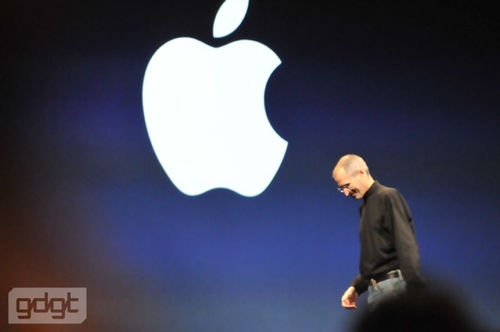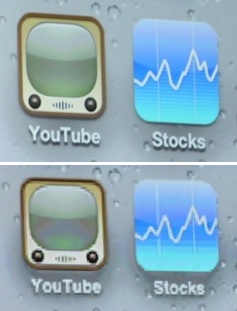
Apple CEO Steve Jobs just stepped off the stage in San Francisco at this year’s Worldwide Developer Conference. His announcements focused squarely on the new iPhone 4, about which you’ll find no shortage of information at Apple’s site and elsewhere online.
But what do Apple’s announcements mean for the news industry, which increasingly looks to mobile product — Apple’s in particular — as a new delivery mechanism and (fingers crossed) a revenue driver? Here are five takeaways from Jobs’ keynote that will have an impact on news organizations.
Apple’s come under a lot of criticism from developers for how it manages its App Store, the major platform for reaching iPhone, iPod touch, and iPad owners. An Apple rejection can mean the investment of building an app is rendered worthless, and it’s not always clear why, precisely, an app is being rejected.
Here’s what Jobs had to say about the App Store approval process, paraphrasing from gdgt’s liveblog of the event:
We get about 15k apps submitted every week. They come in up to 30 different languages. Guess what: 95% of the apps submitted are approved within 7 days. What about the 5% that aren’t? Why don’t we approve them? Let me give you the three top reasons.
The number one reason: it doesn’t function as advertised. It doesn’t do what the developer says it does, so we tell the developer to change the app or the description.
The second reason: the developer uses private APIs. … If we upgrade the OS and the app breaks, we won’t have a happy customer.
And the third most frequent reason: they crash. If you were in our shoes, you’d be rejecting apps for the exact same reasons.
I just wanted to give you the facts — sometimes when you read some of these articles, you may think other stuff is going on.
Maybe number four was “violates Apple’s sense of morality,” and number five was “makes fun of powerful people.” But we don’t know that, because Jobs didn’t mention either. News orgs are fine with the technical guidelines he outlined, but App Store rejections based on rude editorial cartoons or an artfully bare nipple are harder for them to take.
Apple still has not done the obvious: state clearly what is allowed and what is not in terms of morals and satire. Not doing so, of course, maximizes Apple’s power because it can decide on a case-by-case basis. But it also means that content producers can’t have any confidence in the system, and open platforms like Android will have increasing appeal.
In the two months since the iPad launched — and with it Apple’s new ebook platform, iBooks — Apple has taken over a remarkable 22 percent of the ebook market. (That’s based on data from five of the six major publishing companies; the sixth, Random House, isn’t on the iPad.)
In one sentence, Jobs revealed more hard data about ebook sales than Amazon has in 2.5 years of the Kindle. (I exaggerate, but only slightly. Amazon still hasn’t unveiled any hard numbers on Kindle device or ebook sales. Maybe this will prompt them.)
Those Apple ebook sales are based on the 2 million iPads sold, which are the only Apple devices that have iBooks. But iBooks is coming to the iPhone and iPod touch later this month — around the same time Jobs said the 100 millionth iPhone OS device will be sold. In other words, iBooks’ momentum is about to get punched up.
I continue to maintain that ebooks are a huge potential opportunity for news organizations. Ebooks favor timeliness and quick turnarounds in a way that traditional print books can’t, and the digital format means that expectations for length are tossed aside. There’s not much of a print business model for a 50-page printed prose book — but there absolutely can be one for a 50-page ebook. And people feel comfortable paying for ebooks, much more so than for anything labeled “news.” A growing ebooks market with dueling distribution systems (Amazon and Apple) fighting over content is a good thing for news organizations.
 The new iPhone 4 features four times the pixels of its predecessor in the same space, which Jobs promises creates images and text far crisper than ever before. The images on display at the demo looked really impressive. And while the iPhone appears to be in the lead now, undoubtedly its competition will catch up soon enough.
The new iPhone 4 features four times the pixels of its predecessor in the same space, which Jobs promises creates images and text far crisper than ever before. The images on display at the demo looked really impressive. And while the iPhone appears to be in the lead now, undoubtedly its competition will catch up soon enough.
Pro: A better screen means more people will find using mobile devices more pleasant. That could lead to more use of news orgs’ apps and websites on them.
Con: A better screen limits the salience of one of print’s best selling points: higher visual quality. Jobs said 300 dpi is the limit for what the human eye can typically detect. Past iPhones have been at 162 dpi. The new iPhone 4 is 326 dpi — a level Jobs says is indistinguishable from print. (“Text looks like you’ve seen it in a fine printed book, unlike you’ve ever seen in an electronic display,” Jobs said, paraphrasing.) We’ll see about that, but newspapers and magazines are still a lot more effective monetizing print publications than digital ones, so devaluing one of print’s best qualities probably won’t help.
Jobs unveiled a version of iMovie for the iPhone; a version for the iPad can’t be too far off, even though the iPad (currently) lacks a camera. There have been editing apps for video on the iPhone and other platforms before, but iMovie looked both powerful and relatively simply. Reporters in the field getting iPhone video will find it easier than ever to do their own edit before shipping it back to headquarters. I wouldn’t want to be Flip right now; the reasons to have a Flip in addition to a smartphone seem fewer now.
I’ve written about iAd before. It’s Apple’s new immersive, interactive advertising platform being offered up to iPhone developers to put into their apps. Today Jobs showed off a sample iAd, and the crowd seemed to like it.
But the most stunning datapoint was Jobs’ claim that iAd would take in 48 percent of the U.S. mobile display advertising business in the second half of 2010. Remarkable if true, although it’s derived from some questionable math (dividing Apple’s hard-dollar sales numbers into a JP Morgan estimate from the start of the year — see page 46 of that document for the origin). And mobile display advertising is only a small slice of overall mobile advertising — in the same report, SMS advertising is a $3.2 billion business and mobile search advertising is another $321 million.
But in any event, it’s a sign that Apple is here as a big player in yet another market. For large news organizations that could afford to do their own mobile ad sales, Apple’s probably a competitor. For smaller ones that would have a tough time breaking into the mobile ad game, getting 60 percent of iAd revenues — the share Apple is promising — might not be such a bad deal.